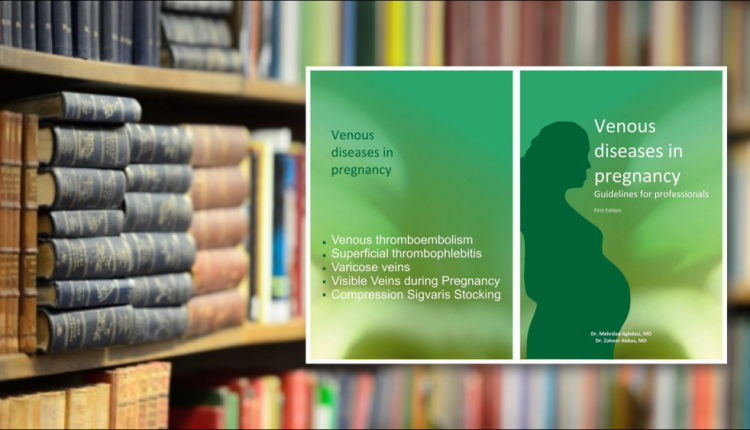
کتاب جامع بیماری های وریدی در دوران بارداری: رهنمونی برای متخصصین
همکاران محترم، این کتاب تخصصی حاصل یک سال تلاش من و همکارانم جهت فراهم آوردن مجموعه ای از اطلاعات کاربردی پیرامون بیماری های مهمی مانند DVT در حاملگی و نیز بیماری های وریدی شایع مانند واریس است.
منابع رفرانس کتاب بیماری های وریدی در دوران بارداری عمدتا از جدیدترین مقالات، گاید لاین ها و مراجع معتبر انتخاب شده اند. مجموعه مطالب توسط پروفسور Eklof مورد بازبینی قرار گرفته است. نامبرده رئیس فوروم وریدی اروپا و از افراد شناخته شده و مورد استناد در بیماری های وریدی بشمار می روند.
گروه هدف در درجه اول شامل متخصصین زنان و زایمان بوده و در مرحله دوم قویا مورد نیاز و استفاده متخصصین طرف مشاوره از جمله بیهوشی داخلی و قلب و عروق خواهد بود.
ترومبوآمبولی وریدی شایع ترین علت مرگ و میر مادران در کشورهای پیشرفته و بیماری واریس شایع ترین تظاهر بیماری عروق در زنان است؛ لذا امیدوارم مراجعه به مطالب کتاب در مواقع ضروری بتواند در جهت معالجه بیماران مفید باشد.
جهت ارتقاء بار علمی در چاپ بعدی منتظر نظرات، انتقادات، و پیشنهادات شما هستم.
لینک دانلود کتاب بیماری های وریدی در دوران بارداری: رهنمونی برای متخصصین
https://www.dropbox.com/s/to5eo3c4jbxbznx/ketab.pdf?dl=0
Management of anticoagulant therapy at the time of delivery
Women requiring therapeutic doses of LMWH should
…………………………………………………………………………………………………….
- Spontaneous or planned delivery? Cesarean section
Delivery by cesarean section should only be decided on the basis of …………………………………………………………………………………………………………………………
Time off anticoagulation
Heparin therapy generally is stopped during labor and delivery. If the uterus is well contracted and there has been negligible trauma to the lower genital tract, it can be restarted after about 12 hours. Otherwise, a delay of 1 or 2 days may be prudent.
………………………………………………………………………………………………..………………………………………………………………………………………………..
Postpartum management
Anticoagulation should be restarted after delivery, as soon as possible, but depending on the amount of estimated vaginal blood loss and the type of delivery. Generally, restarting anticoagulation 6 to 12 hours after delivery is feasible, but this period should be longer if hemostasis is not adequate.
……………………………………………………………………………………………..……………………………………………………………………………………………..
Management of PE in late pregnancy and during delivery
VTE occurring close to term may affect the management of delivery.
Patients presenting with pulmonary embolism in late pregnancy should be treated with …………..
……………………………………………………………………………………
Who needs thromboprophylaxis
Risk assessment and the recommendation comments are shown in Table 1.
Women with two or more persisting risk factors should be considered for LMWH for 7 days after delivery.
Women with previous VTE
- Women with previous recurrent VTE should be offered thromboprophylaxis with LMWH antenatally and anticoagulant for 6 weeks postpartum.
Women with one previous VTE ……………………………………………………………………………..
